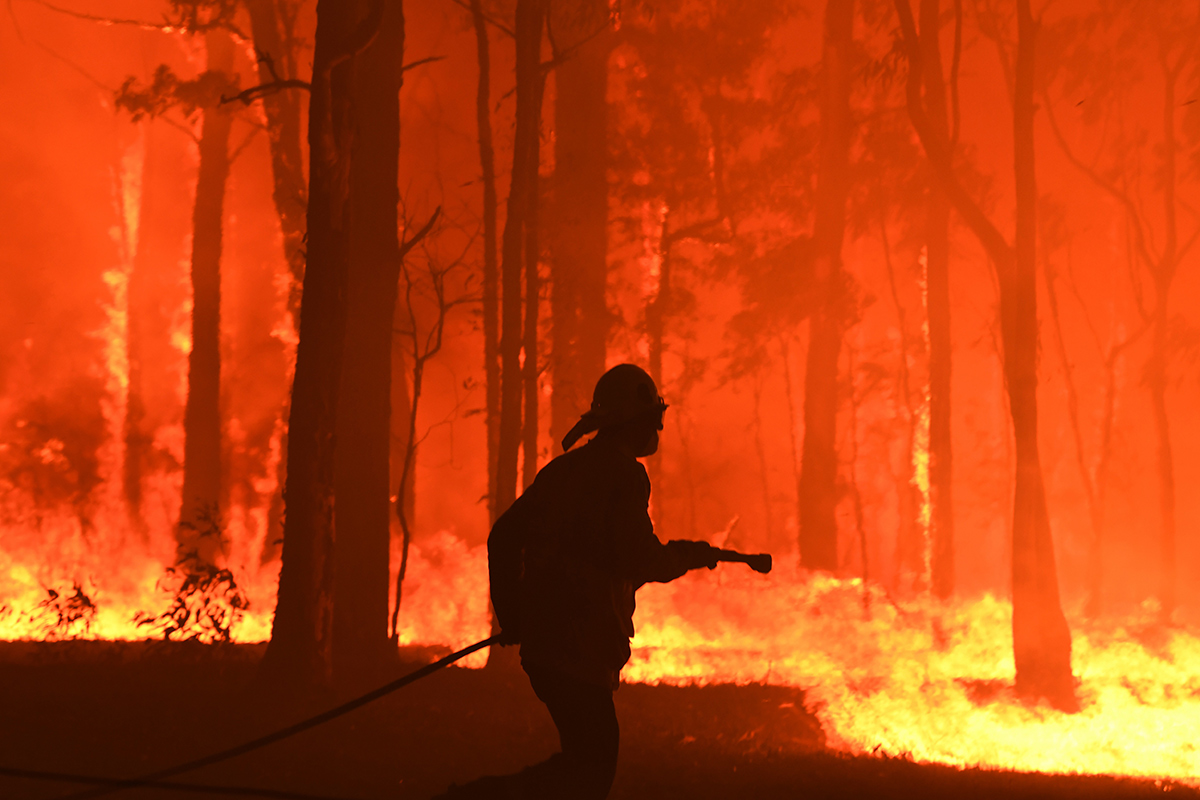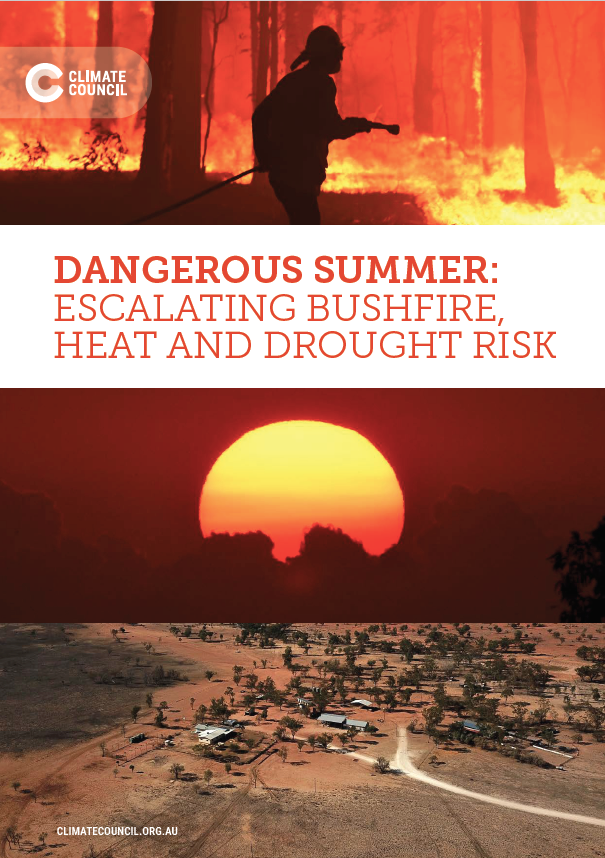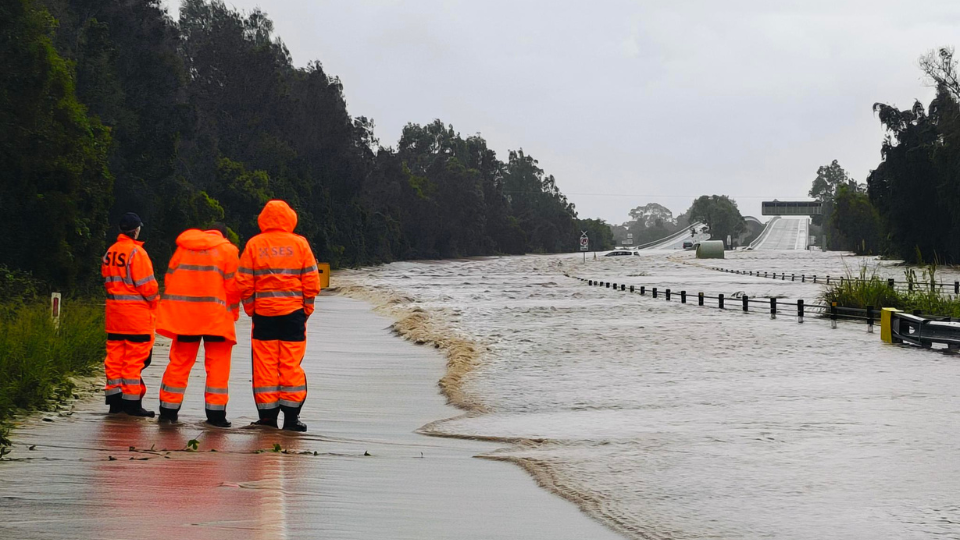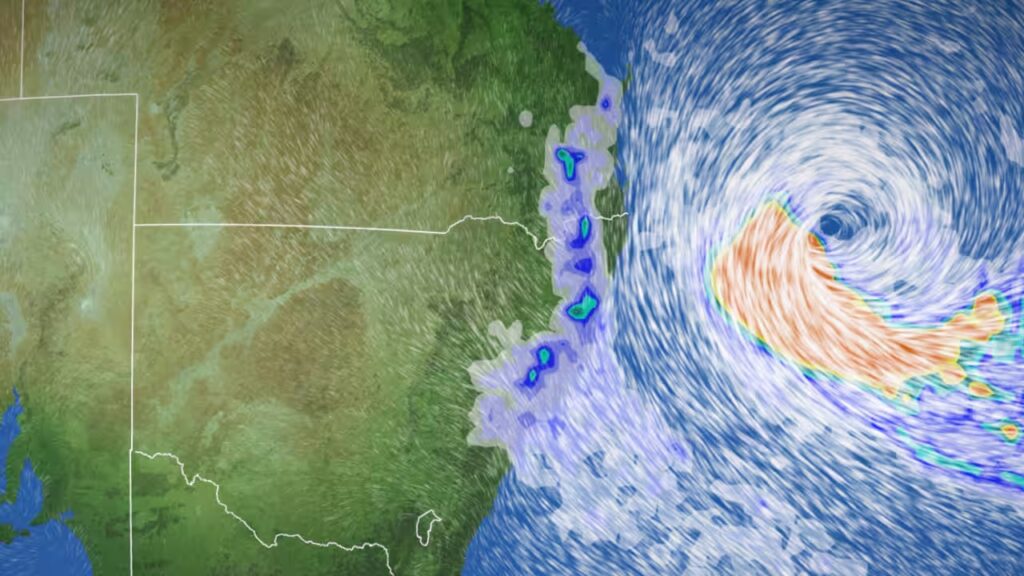A long-term warming trend from the burning of coal, oil and gas is supercharging extreme weather events, putting Australian lives, our economy and our environment at risk.
The Climate Council’s new report, ‘Dangerous Summer: Escalating Bushfire, Heat and Drought Risk‘, has found this summer is shaping up as a terrible trifecta of heatwaves, drought and bushfires, made worse by climate change.
DOWNLOAD THE REPORT
Key Findings:
1. Australia is being battered by extreme weather events, made worse by climate change. The summer of 2019/20 is shaping up as another terrible trifecta of heatwaves, droughts and bushfires.
- The projections for the summer of 2019/20 are extremely concerning. The Bureau of Meteorology is forecasting above-average maximum temperatures for most of Australia with eastern Australia – already plagued by drought – likely to be drier than average.
- The 2019/20 bushfire season in New South Wales and southeast Queensland began in winter. Already six lives have been lost and more than 600 homes destroyed in New South Wales, mostly in remote and rural areas and small towns. It is now only the beginning of summer, which means the hottest weather and greatest danger period may still be to come.
- The bushfires have been costly for farmers. In Cobraball, Queensland, for example, an estimated 12,000 hectares of farmland have been destroyed, including 230 hectares of high-value horticultural crops, with an estimated $20 million damage bill for farms in the region.
- Wildlife has also been badly affected by the ongoing bushfires, with reports of at least 1,000 koala deaths in important habitats in New South Wales, Queensland and South Australia and the habitats of some of the most ancient and globally iconic songbirds have either been burnt or are under threat.
2. Climate change is making many extreme weather events in Australia worse.
- Climate change is now making hot days hotter, and heatwaves longer and more frequent. This has implications for bushfire weather, with fire seasons starting earlier and lasting longer.
- Long-term heating and the reduction in cool season rainfall in mainland southern Australia are exacerbating drought conditions.
- The period from January 2017 to October 2019 has been the driest on record for the Murray- Darling Basin as a whole. Over the same period of time, new long-term records for low soil moisture have been set, with ten of the Basin’s 26 river catchments recording the lowest soil moisture levels on record.
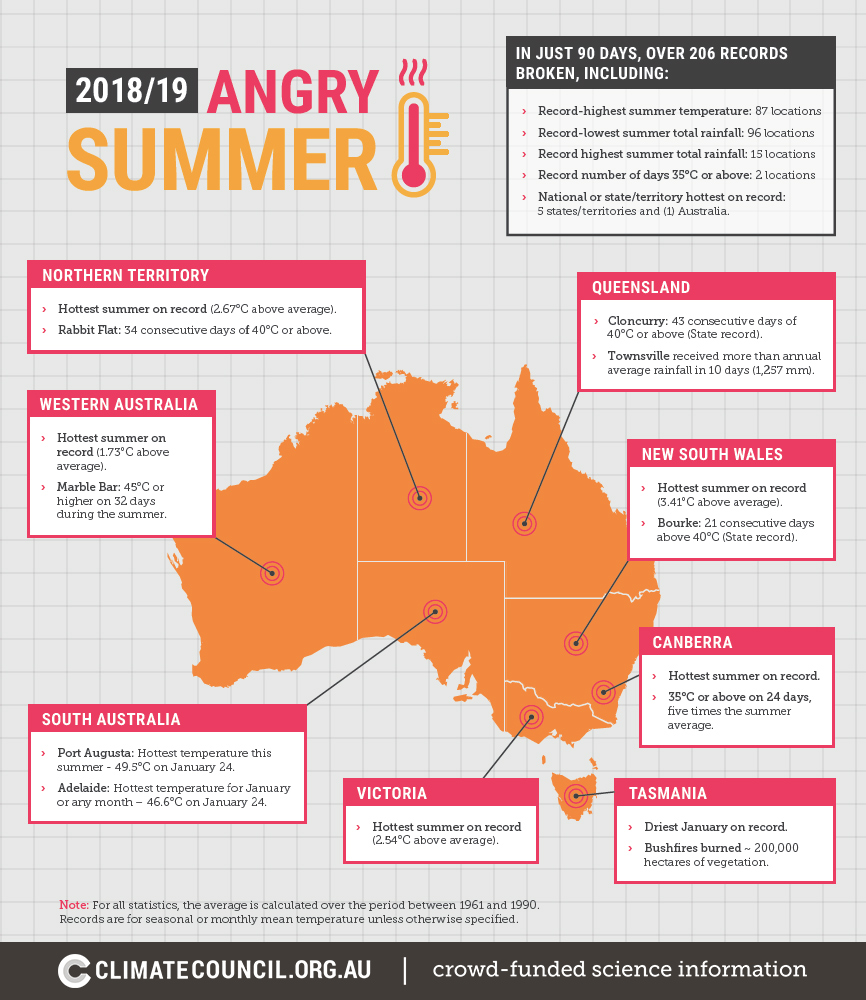
3. Worsening extreme events, such as heatwaves, drought and bushfires, are affecting the health and well-being of Australians and important sectors such as farming.
- The number of heatwave days each year has been increasing in Perth, Adelaide, Melbourne, Sydney, Canberra and Hobart, and across Australia as a whole since 1950. Heatwaves can have severe effects on human health, including both direct heat illnesses (e.g. heat exhaustion) and indirect impacts (e.g. cardiovascular failure).
- The heatwave that occurred during the summer of 2009 is estimated to have resulted in as many as 500 excess deaths in Melbourne and Adelaide (374 deaths in Melbourne and 50-150 deaths in Adelaide).
- The current prolonged drought across eastern Australia is threatening crops for the third year in a row, and national summer crop production is forecast to fall by 20 percent to 2.1 million tonnes in 2019/20.
Bushfires also cause serious health impacts, including direct loss of life, physical injuries and mental health issues. Large populations are also at risk from the health impacts of bushfire smoke, which contains respiratory irritants and cancer-causing substances.
By elevating the science and putting the impacts of climate change front and centre, we’re empowering all Australians with the knowledge and tools to pressure the Federal Government into taking real action.
Can you chip in today to fund our critical ongoing work?

4. The catastrophic events that are unfolding in Australia are not “normal”. Now is the time to act decisively and swiftly.
- A long-term heating trend from the burning of coal, oil and gas is supercharging extreme weather events, putting Australian lives, our economy and our environment at risk. Australia is one of the most vulnerable developed countries to climate change.
- If greenhouse gas emissions continue to rise, the unusually hot weather currently experienced will become commonplace, occurring every summer across the country. Sydney and Melbourne could experience unprecedented 50°C summer days by the end of the century.
- Australian states, territories, towns and cities are leading the way on climate action. This leadership is hugely important because the Federal Government has no credible pathway for reducing emissions.
- Australia must contribute to the global effort to deeply and rapidly reduce greenhouse gas emissions and we must prepare our fire and emergency services and communities for worsening extreme weather events.

